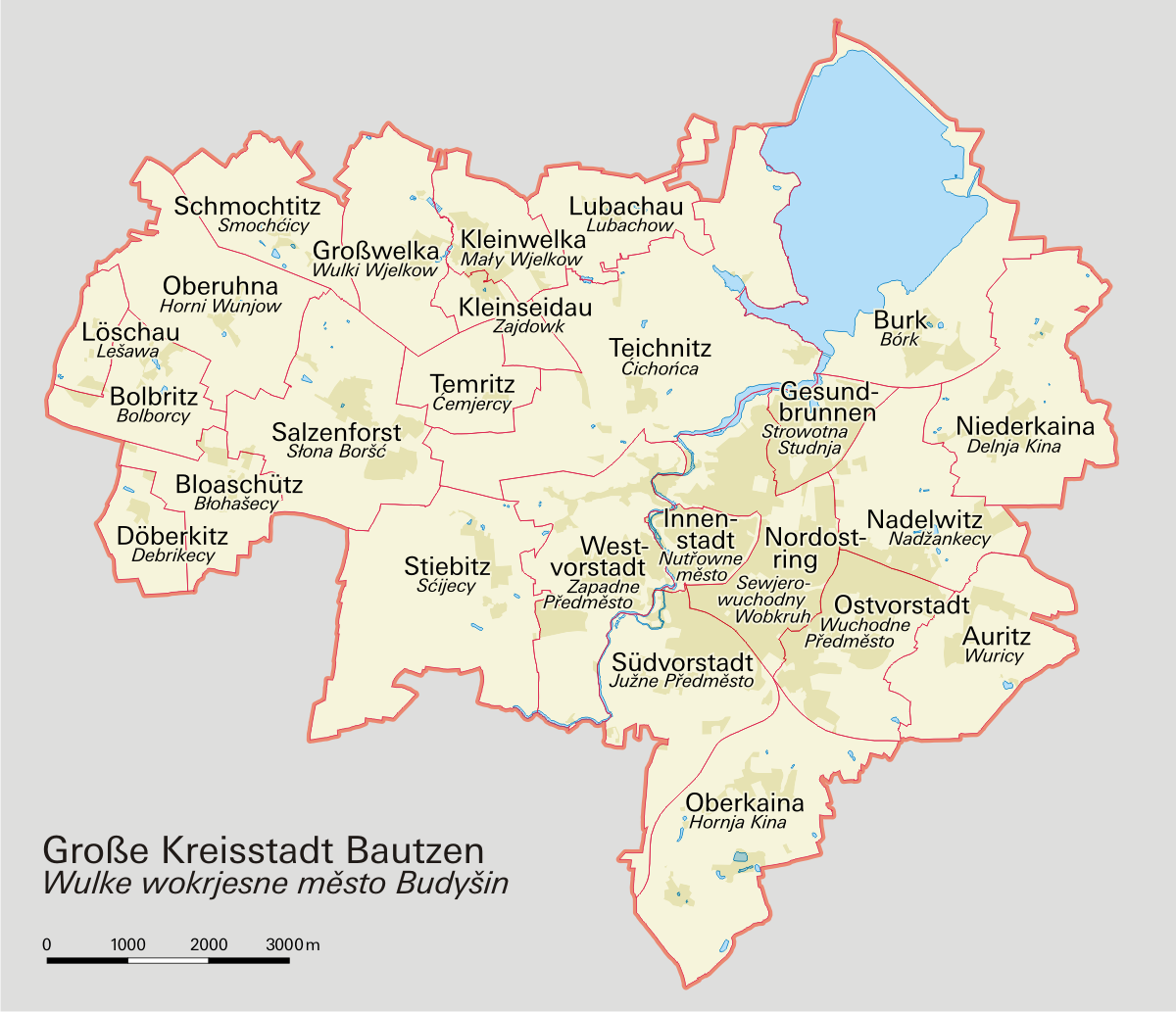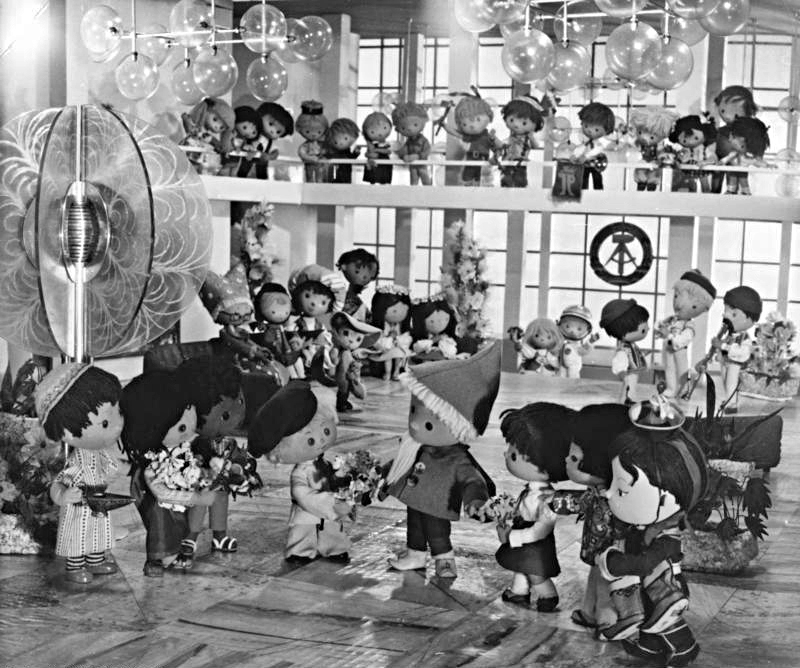|
Sorbischer Rundfunk
Sorbian Broadcasting ('' dsb, Serbski rozgłos'', '' Upper Sorbian:'' ', ''german: Sorbischer Rundfunk'') is the Sorbian language program of Mitteldeutscher Rundfunk (MDR) and Rundfunk Berlin-Brandenburg (RBB), both of which are regional public broadcaster in Germany. It is the only broadcast in a national minority language in Germany. History Origins–1955 During the years 1946/47 the Czechoslovak Radio in Prague produced various Sorbian shows that were initiated by the Sorbian National Council. The Czechoslovak Radio already had some recordings of Sorbian music and poetry in its archives. The first radio program in Sorbian language to be produced in Germany appeared on October 14, 1948, following the demands of then Domowina leader Pawoł Nedo. The program had a duration of 15 minutes and was available on a two-weekly basis on Sender Dresden (sometimes Sender Leipzig). Since 1953, irregular program in Lower Sorbian followed in Sender Potsdam. The time slots and channe ... [...More Info...] [...Related Items...] OR: [Wikipedia] [Google] [Baidu] |
MDR SAKSKA Logo 2017
MDR may refer to: Biology * MDR1, an ATP-dependent cellular efflux pump affording multiple drug resistance * Mammalian Diving reflex * Medical device reporting * Multiple drug resistance, when a microorganism has become resistant to multiple drugs Technology * Managed Detection and Response, a type of computer Managed security service * Massive Data Repository, a data storage facility for the United States' Intelligence Community * Sony MDR-V6, a line of studio headphones designed by Sony * Medical device reprocessing * Memory data register, a hardware register where data to be transferred to/from memory are temporarily stored * Mental dead reckoning * ''Merchant discount rate,'' see Merchant account § Discount rates * Metadata registry, a central location in an organization where metadata definitions are stored and maintained in a controlled method. * Metadata repository, a database created to store metadata * Mini D ribbon, a cable connector type * Motion detection radar * Mul ... [...More Info...] [...Related Items...] OR: [Wikipedia] [Google] [Baidu] |
Wuhladko
Wuhladko (Upper Sorbian for "prospect") is the name of a half-hour television programme in Upper Sorbian language. It has been broadcast every month since 2001 by Mitteldeutscher Rundfunk (MDR), and is presented by Bogna Koreng. The programme mainly deals with Sorbian topics from Upper Lusatia, but also deals with politics from Saxony and Germany, which affect the Sorbs throughout Lusatia. The Sorbian people's contributions to culture, everyday life, politics, and traditions are the focus. The contributions are subtitled in German German(s) may refer to: * Germany (of or related to) **Germania (historical use) * Germans, citizens of Germany, people of German ancestry, or native speakers of the German language ** For citizens of Germany, see also German nationality law **Ger .... The Upper Sorbian television programme ''Wuhladko'' is the counterpart to the Lower Sorbian programme Łužyca, which in turn has been broadcast every 4 weeks since 1992 by the Rundfunk Berlin-Brande ... [...More Info...] [...Related Items...] OR: [Wikipedia] [Google] [Baidu] |
Łužyca (TV Program)
Lusatia (german: Lausitz, pl, Łużyce, hsb, Łužica, dsb, Łužyca, cs, Lužice, la, Lusatia, rarely also referred to as Sorbia) is a historical region in Central Europe, split between Germany and Poland. Lusatia stretches from the Bóbr and Kwisa rivers in the east to the Pulsnitz and Black Elster rivers in the west, and is located within the German states of Saxony and Brandenburg as well as in the Polish voivodeships of Lower Silesia and Lubusz. Lusatia's central rivers are the Spree and the Lusatian Neisse, which constitutes the border between Germany and Poland since 1945 (Oder–Neisse line). The Lusatian Mountains (part of the Sudetes), separate Lusatia from Bohemia (Czech Republic) in the south. Lusatia is traditionally divided into Upper Lusatia (the hilly southern part) and Lower Lusatia (the flat northern part). The areas east and west along the Spree in the German part of Lusatia are home to the Slavic Sorbs, one of Germany's four officially recognized indigen ... [...More Info...] [...Related Items...] OR: [Wikipedia] [Google] [Baidu] |
Astra (satellite)
Astra is the brand name for a number of geostationary communication satellites, both individually and as a group, which are owned and operated by SES S.A., a global satellite operator based in Betzdorf, in eastern Luxembourg. The name is also used to describe the pan-European broadcasting system provided by these satellites, the channels carried on them, and even the reception equipment. At the time of the launch of the first Astra satellite, Astra 1A in 1988, the satellite's operator was known as Société Européenne des Satellites. In 2001 SES Astra, a newly formed subsidiary of SES, operated the Astra satellites and in September 2011, SES Astra was consolidated back into the parent company, which by this time also operated other satellite families such as AMC, and NSS. Astra satellites broadcast 2600 digital television channels (675 in high definition) via five main satellite orbital positions to households across Asia, Australia, Africa, Americas, Europe, New Zeal ... [...More Info...] [...Related Items...] OR: [Wikipedia] [Google] [Baidu] |
MDR Fernsehen
MDR Fernsehen is a regional public service television channel owned and operated by Mitteldeutscher Rundfunk (MDR) and serving Saxony, Saxony-Anhalt and Thuringia Thuringia (; german: Thüringen ), officially the Free State of Thuringia ( ), is a state of central Germany, covering , the sixth smallest of the sixteen German states. It has a population of about 2.1 million. Erfurt is the capital and lar .... It is one of the seven regional "third programmes" that are offered within the federal ARD network. Logos File:Ex-MDR-Fernsehen-Logo.svg, Former logo File:Mdr-fernsehen-logo.svg, Logo, 2003 - 31 December 2016 File:MDR HD.svg, HD version logo, 2013 - 31 December 2016 File:MDR Fernsehen Logo (2013).png, On-Air Logo (2013–2016) File:MDR HD Logo.png, HD version On-Air Logo (2013–2016) File:MDR Logo 2017.svg, Logo since 1 January 2017 File:Mdr Fernsehen HD Logo 2017.png, HD version logo since 1 January 2017 File:MDR Thüringen Logo 2017.svg, Logo in Thuringia since 1 Ja ... [...More Info...] [...Related Items...] OR: [Wikipedia] [Google] [Baidu] |
Bautzen
Bautzen () or Budyšin () is a hill-top town in eastern Saxony, Germany, and the administrative centre of the district of Bautzen. It is located on the Spree river. In 2018 the town's population was 39,087. Until 1868, its German name was ''Budissin''. In 1945 the Battle of Bautzen was Hitler’s last victory against the Soviet Union during the Battle of Berlin . Bautzen is often regarded as the unofficial, but historical capital of Upper Lusatia. The town is also the most important cultural centre of the Sorbian minority, which constitutes about 10 percent of Bautzen's population. Asteroid '' 11580 Bautzen'' is named in honour of the city. Names Like other cities and places in Lusatia, Bautzen has several different names across languages. Its German name was also officially changed in 1868. As well as ''Bautzen'' (German) and ''Budyšin'' (Upper Sorbian), the town has had the following names: * German: ''Budissin'' (variants used from c. 11th century onwards; Saxon gov ... [...More Info...] [...Related Items...] OR: [Wikipedia] [Google] [Baidu] |
Cottbus
Cottbus (; Lower Sorbian: ''Chóśebuz'' ; Polish: Chociebuż) is a university city and the second-largest city in Brandenburg, Germany. Situated around southeast of Berlin, on the River Spree, Cottbus is also a major railway junction with extensive sidings/depots. Although only a small Sorbian minority lives in Cottbus itself, the city is considered as the political and cultural center of the Sorbs in Lower Lusatia. Spelling Until the beginning of the 20th century, the spelling of the city's name was disputed. In Berlin, the spelling "Kottbus" was preferred, and it is still used for the capital's ("Cottbus Gate"), but locally the traditional spelling "Cottbus" (which defies standard German-language rules) was preferred, and it is now used in most circumstances. Because the official spelling used locally before the spelling reforms of 1996 had contravened even the standardized spelling rules already in place, the (german: Ständiger Ausschuss für geographische Namen) str ... [...More Info...] [...Related Items...] OR: [Wikipedia] [Google] [Baidu] |
Upper Sorbian
Upper Sorbian (), occasionally referred to as "Wendish", is a minority language spoken by Sorbs in Germany in the historical province of Upper Lusatia, which is today part of Saxony. It is grouped in the West Slavic language branch, together with Lower Sorbian, Czech, Polish, Slovak and Kashubian. History The history of the Upper Sorbian language in Germany began with the Slavic migrations during the 6th century AD. Beginning in the 12th century, there was a massive influx of rural Germanic settlers from Flanders, Saxony, Thuringia and Franconia. This so-called "Ostsiedlung" (eastern settlement or expansion) led to a slow but steady decline in use of the Sorbian language. In addition, in the Saxony region, the Sorbian language was legally subordinated to the German language. Language prohibitions were later added: In 1293, the Sorbian language was forbidden in Berne castle before the courts; in 1327 it was forbidden in Zwickau and Leipzig, and from 1424 on it was forbidden ... [...More Info...] [...Related Items...] OR: [Wikipedia] [Google] [Baidu] |
Lower Sorbian Language
Lower Sorbian () is a West Slavic minority language spoken in eastern Germany in the historical province of Lower Lusatia, today part of Brandenburg. Standard Lower Sorbian is one of the two literary Sorbian languages, the other being the more widely spoken Upper Sorbian. The Lower Sorbian literary standard was developed in the 18th century, based on a southern form of the Cottbus dialect. The standard variety of Lower Sorbian has received structural influence from Upper Sorbian. Lower Sorbian is spoken in and around the city of Cottbus in Brandenburg. Signs in this region are typically bilingual, and Cottbus has a '' Lower Sorbian Gymnasium'' where one language of instruction is Lower Sorbian. It is a heavily endangered language. Most native speakers today belong to the older generations. Phonology The phonology of Lower Sorbian has been greatly influenced by contact with German, especially in Cottbus and larger towns. For example, German-influenced pronunciation tends ... [...More Info...] [...Related Items...] OR: [Wikipedia] [Google] [Baidu] |
Sandmännchen
''Unser Sandmännchen'' ("Our Little Sandman"), ''Das Sandmännchen'' ("The Little Sandman"), ''Der Abendgruß'' ("The Evening-Greeting"), ''Abendgruß'' ("Evening-Greeting"), ''Der Sandmann'' ("The Sandman"), ''Sandmann'' ("Sandman"), ''Sandmännchen'' ("Little Sandman") is a German children's bedtime television programme using stop motion animation. The puppet was based on the Ole Lukøje character by Hans Christian Andersen. Two versions of ''Sandmännchen'' were created: one in East Germany (''Unser Sandmännchen''), and one in West Germany (''Das Sandmännchen''). The series has aired more episodes than any other television series and is the longest running animated television series in history. Background The original idea came from of West Berlin TV and radio station Sender Freies Berlin (SFB), who, with the help of author Johanna Schüppel, developed a working version in 1958. ''The Little Sandman'' himself first appeared on screen in West Berlin in ''Sandmä ... [...More Info...] [...Related Items...] OR: [Wikipedia] [Google] [Baidu] |
ORB Fernsehen
RBB Brandenburg (until May 2003 ORB-Fernsehen) was the third television channel for Brandenburg, (Germany) from January 1992 to March 2004. Until May 2003, it was organized by Ostdeutscher Rundfunk Brandenburg (ORB), then by its successor, Rundfunk Berlin-Brandenburg (RBB). On 1 March 2004, the two regional television channels of RBB – ''RBB Brandenburg'' and '' RBB Berlin'' – were integrated into the new rbb Fernsehen. History The programme was launched on 1 January 1992 under the name ''Fernsehen Brandenburg''. In the initial build-up phase, the then ARD cultural television programme Eins Plus was taken over from 3 p.m. to 5.15 p.m. and after 9 pm, and for cost reasons there were initially only a few programmes of its own in the programme. For example, the fact that the news programme was broadcast at 8:45 p.m. and the ''Brandenburg Journal'' at 7 p.m. was unusual for viewers in Brandenburg. Especially after the fall of communism, many East Germans had orien ... [...More Info...] [...Related Items...] OR: [Wikipedia] [Google] [Baidu] |





